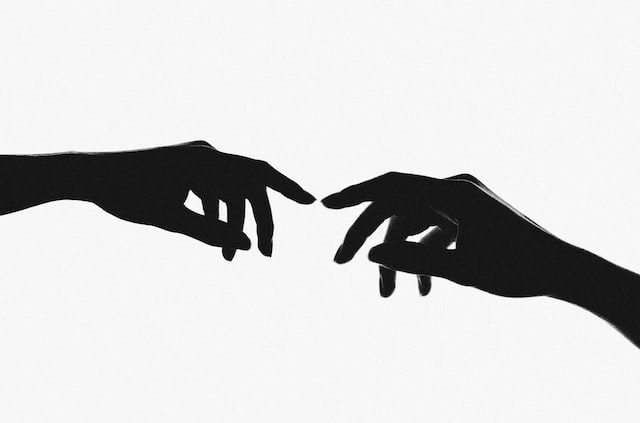
Mindfulness Through Breathing
In order to mean what you say through mindfulness, we must first understand what mindfulness is. Mindfulness is an intentional action that liberates an individual. Primarily, mindfulness is defined as an awareness that is free from distortion or bias. It’s a neutral space in the present moment.
It’s as easy to find as focusing in on your breathing: listening for the drawing in and out, really being attuned to what your breath feels like to inhale and exhale.
You’ve entered the present moment as quickly as you focus in on your breathing; when the shift appears to go from automatic to manual.
Rarely, are we ever conscious of this ability to quiet the noise in our head. How many of us are guilty of saying : “The voices in my head won’t quiet down” or “I have a million things on my mind”? Often, it’s those very thoughts that cause us to be more reactive than responsive in our conversations.
Have you ever tried just pausing and listening to your breath? It really is a rather delightful phenomenon that we could all utilize as a transformative tool – especially when engaged in dialogues.
Deconstruct Disbelief
Bias often gets in the way of listening to a person. This is mainly because we confuse listening with belief and agreement. This is one of the many false assumptions we prescribe to when we are engaged in any kind of exchange. We are incorrectly convinced that listening equates to believing a person, and if we believe a person, then somehow we must also agree with them.
This was a common conflict during the Ford-Kavanaugh case. We were so divided simply because we were confused about whether or not listening meant agreeing with or taking a side. Listening does not mean agreement. Listening does not mean that you must consider what the other is saying as an absolute truth that “wins” the discussion. Simply, listening is just an act that allows us to receive the gift of information that the other is will to give to us.
Identity politics heavily contribute to our conditioned patterns to dismiss and deflect from potential meaningful exchanges. This comes as a result of allowing the language of blame and judgement to permeate our present moment. After all, we have been inadvertently influenced (possibly conditioned) to hear blame and judgment. Our habitual inclinations lead us to defend against what we perceive as blame. Dialogues, lately, always seem to be predicated with defense.
The ego gets in the way of our ability to enter into and engage from a place of curiosity and care because the ego already “knows” what is necessary to influence an emotive reaction. The truth is, we don’t know, we just allow our perceptions to interpret automatically before we grant space to process and reflect.
To deconstruct from these patterns, the fundamental application begins with mindfulness. Once we can center in on the open space, we can learn to develop a new technique to catapult us into compassionate exchanges.
Habits Lead to Disconnection
What breathing in and out allows for us is time- time to absorb and analyze the data. If a computer doesn’t analyze data properly, there is an error code. The same goes for our complex supercomputers- otherwise known as our brains. If we don’t give ourselves time to process the data; we erroneously spit out coded language that we have been conditioned to repeat based on our audience demographics. In doing this, we turn our conversation into a process of automatic reactions instead of an experience of meaning and information input.
There is a gift in conversation that we take for granted. Most of us like gifts. We like to receive things. We are instructed to think it is better to give than to receive; but admittedly, we really prefer receiving.
Conversations are truly a gift that keeps on giving, and we are both the giver and receiver in these interactions. We give pieces of our own perspective to another and in return, the other gifts us their perspective. And, as my father-in-law likes to remind me, rejecting gifts is just plain rude!
When we reject the gift of authentic and transparent perspectives from the one we are engaging with, it’s like we are yanking on the cord that connects us to a port. If we don’t stop pulling at the cord- if we don’t stop resorting to habitual behaviors of allowing the ego to spit out whatever messages it wants, we eventually disconnect. The cord comes out; the connection is lost.
The only way we can plug back into that port is if we let go of our imagined perceptions- we let go of the assumptions we have brought into the dialogue. But, we can only do that if we plug back into the present moment.
What is the Present Moment?
Vietnamese Buddhist Monk and peace activist, Thich Nhat Hanh, defines the practice of presence as a knowing- an awareness- that observes the space of all of our actions. In his best-seller, Living Buddha, Living Christ, Hanh writes:
“When the Buddha was asked, “Sir, what do you and the monks practice?” he replied. “We sit, we walk, we eat.” The questioner continued, “But sir, everyone sits, walks, and eats,” and Buddha told him, “When we sit, we know we are sitting. When we walk, we know we are walking. When we eat, we know we are eating.”
To know, then, means to intentional notice with feeling. Feeling what is felt in the present moment.
I asked my eight-year-old son the other day “What does it feel like to sit on that chair right now?”, he responded, “I don’t know? It feels like I am sitting”. After pondering the question, he paused, closed his eyes, and then said, “It feels hard, like it is pressing against me; it feels flat.” I continued, “What makes you not notice how the chair feels while you are sitting on it?” He answered, “Because I was not thinking about it, I was playing my game.”
I Think, Therefore I Know
“When we sit, we know we are sitting.” To know is to think about what you are feeling, both internally and externally- mentally as well as physically.
We rarely think about that which we are doing or how it feels because we aren’t thinking about what it feels like to walk, scrub dishes, fold laundry, grip a steering wheel while driving during a blizzard. Our other thoughts are distracting us. Our attention is not solely focused on all of the sensations that are registering to our brain. Our attention, most of the time, is focused inwardly, on ourselves or set in the past or the future. Hanh further elucidates:
Most of the time, we are lost in the past or carried away by future projects and concerns. When we are mindful, touching deeply the present moment, we can see and listen deeply, and the fruits are always understanding, acceptance, love, and the desire to relieve suffering and bring joy.
If you aren’t thinking about the present moment, you won’t know you’re in it.
Knowing Strengthens Attentive Listening Through Kenosis
Attentive listening is a fundamental practice for engaging in meaningful conversations. It’s also an ego-less, self-emptying act that is grounded in the concept of kenosis.
In Greek, the word kenosis is derived from the verb kenoo and literally means “the act of emptying.” In Christian theology, this concept can be found in many places throughout the Bible. The most direct passage is found in Philippians 2:5–7:
Let the same mind be in you that was in Christ Jesus, who, though he was in the form of God, did not regard equality with God as something to be exploited, but emptied himself [kenoo], taking the form of a slave, being born in human likeness.
Kenosis is a process in which we set aside our ego. The ego loathes the present moment and depends on the past or the future to maintain control. Essentially, when we pause and focus on our breathing, we are removing the ego when we silence the thoughts running around.
And Breath
Try it right now. Stop what you are doing and just focus all of your attention on observing and listening to the sounds of your breath. Do you notice how quiet it was in your mind? That was you, pushing aside the ego, and giving all the space to the present moment.
What I personally like about breathing, especially when I am activated or feeling highly reactive; is that it helps calm you down. This is extremely beneficial when engaged in a heated argument.
We have a tendency to blame and judge and extinguish any possibility of compassion. Without time to breath, we can become cruel. As I have written before, it isn’t cool to be cruel.
The Ethics of Emptying the Ego
Imagine if we could put that kind of energy into our daily conversations? What if we were able to suspend our thought and leave it detached from our emotions and needs? We could observe by a means of emptying ourselves all that is available to be experienced in the present moment.
Some call this the practice of silencing the false self. In Luke 9:23, Jesus called it denying thyself:
Whoever wants to be my disciple must deny themselves and take up their cross daily and follow me.
And the Prophet Muhammad stated it like this:
Die before you die.
Whether we call if dying to the Self, or dying before we die; we essentially give up the false divinity we have for ourselves in which we believe we are the sole being in the center of the universe. Let’s be honest, when we engage in conversations, most of the time we are busy thinking of the next thing to say; very rarely are we still to the experience to soak in the message we are receiving. That’s the ego, strategizing a way to “win” the argument; formulating a way to show why you are “right”.
To empty ourselves means we are willing to recognize that all participants within our conversation or interaction are also equal points in the universe. Following that, means, of course, that if we are willing to recognize the other participants in the conversation, we are also then able to recognize that each has their own, unique perspective. From there, we can continue the giving and receiving in one shared experience.
Consent to the Existence of The Other
French philosopher and mystic Simone Weil, standardized attention as an ethical obligation that grants the other human recognition, which only builds a more meaningful experience during the exchange with another. If we are unable to humanize the other, compassion is going to be a challenge that may propel us in a trajectory toward misunderstanding rather than understanding.
For Weil, attention is love and attention consents to the existence of another. Kenosis is defined by many, as the act by which we are loving another. In the same way that Jesus loved all of humanity and emptied himself completely as a final demonstration of love-in-action; it is a love unconcerned with the self.
Attention is a kenotical act in which we recognize the alterity of the other; granting space for the otherness to exist in our shared experience. Ethically, we are called to extend this kind of love to the other, to the neighbor, yet rarely are we willing to do so.
















